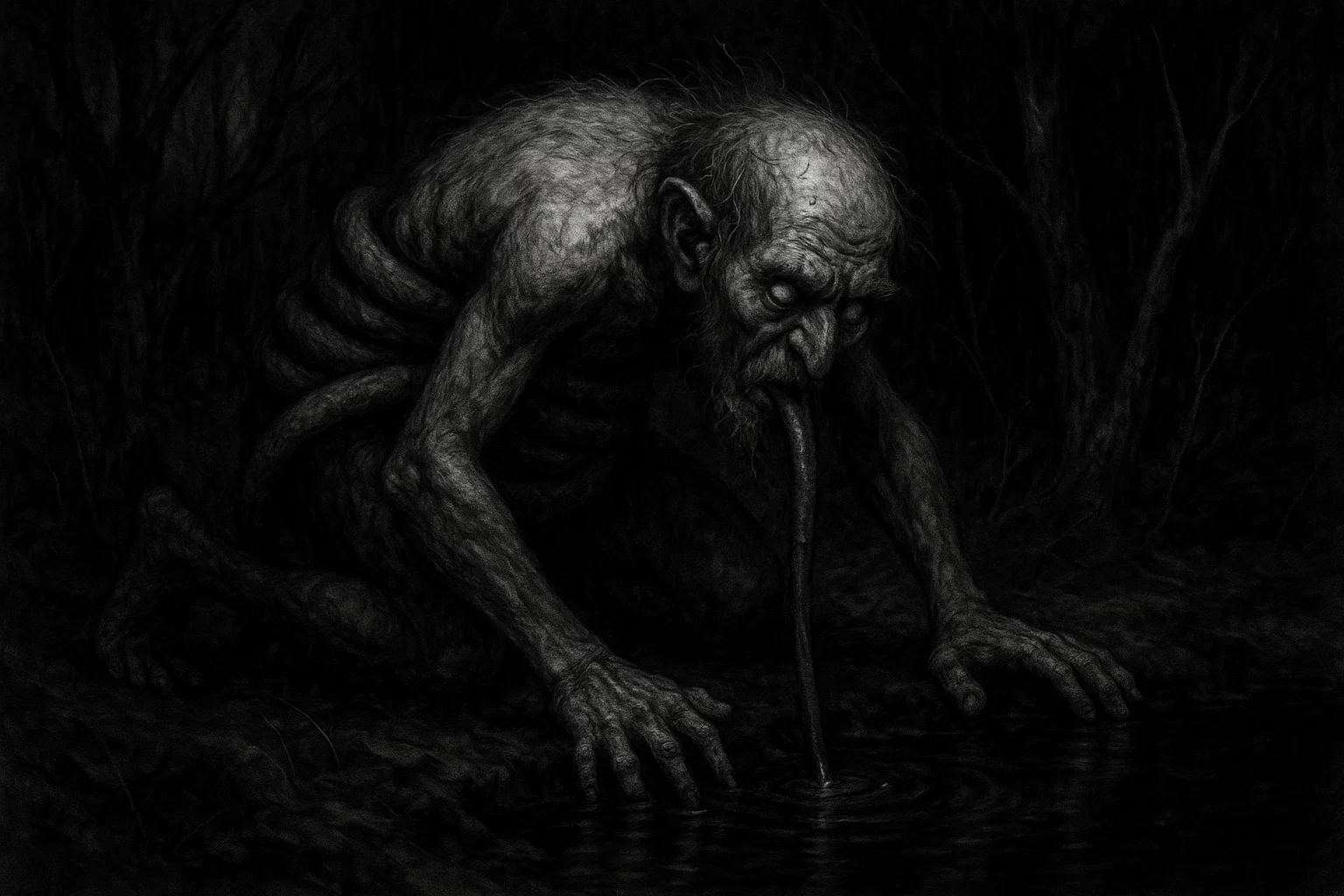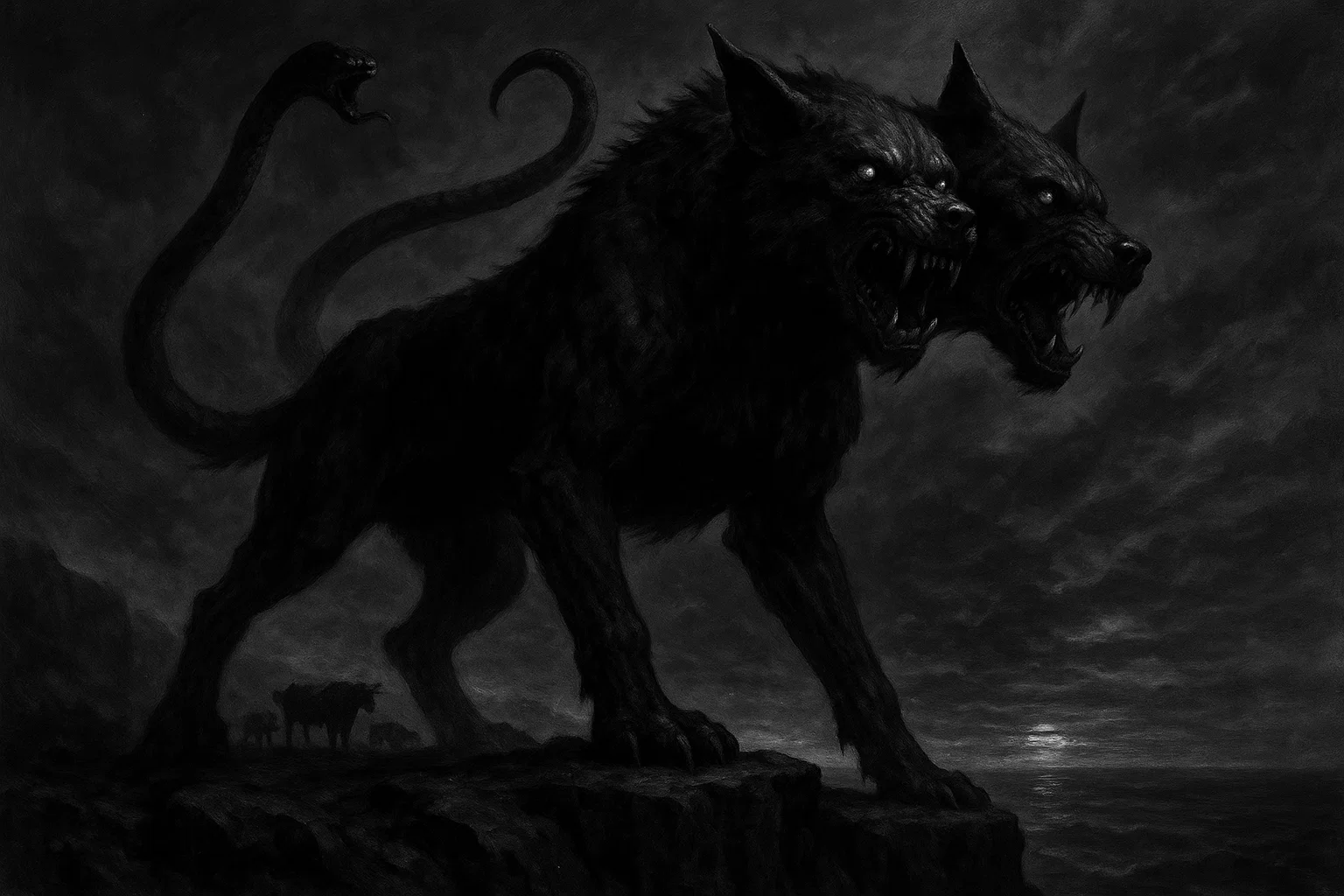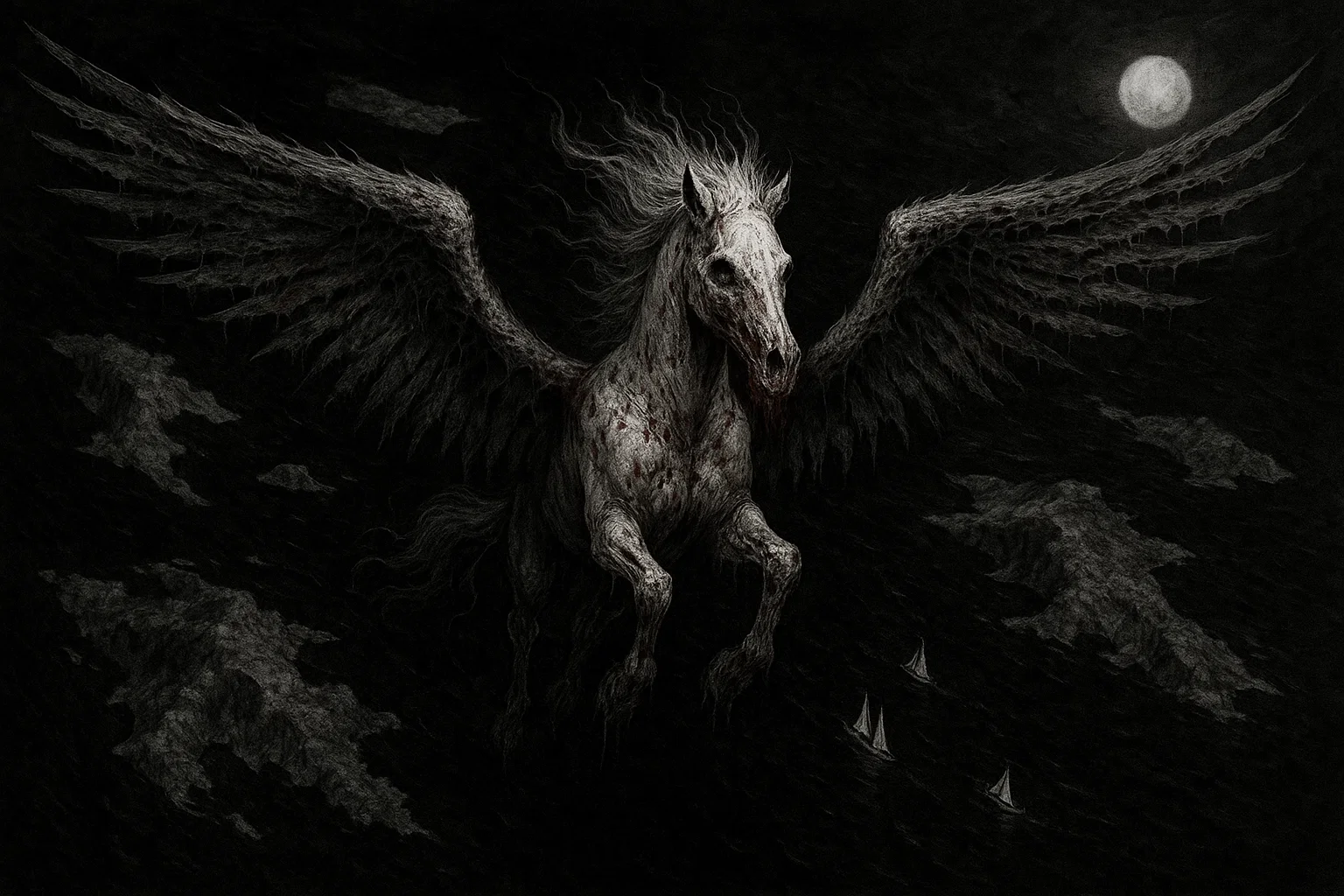Hidden within the dense, verdant jungles of South America, where ancient myths pulse through the heart of the wilderness, lies the legend of Kurupi, a creature both feared and revered in Guaraní mythology.
This elusive cryptid, shrouded in tales of mystery and intrigue, haunts the forests of Paraguay, Brazil, and Argentina, captivating the imaginations of those who hear its name.
Is Kurupi merely a folklore figure, a cautionary tale woven to explain the unexplainable, or could it hint at a deeper truth lurking in the shadows? In this comprehensive exploration, we delve into the origins, appearance, habitat, sightings, evidence, and cultural significance of Kurupi, comparing it to other South American cryptids and questioning its reality.
Summary
What Is Kurupi?
Kurupi is a central figure in Guaraní mythology, often classified as a cryptid due to its unverified existence in the natural world.
It is one of the seven monstrous offspring of Tau, a malevolent deity, and Kerana, a Guaraní woman, alongside siblings Teju Jagua (a lizard-dog with seven heads), Mbói Tu’i (a serpent with a parrot’s head), Moñái (a horned snake), Jasy Jatere (a beautiful man), Ao Ao (a fanged sheep-like goblin), and Luison (a human-dog hybrid).
These figures, deeply embedded in the folklore of Guaraní-speaking communities across Paraguay, Brazil, and Argentina, embody various aspects of nature and human experience, with Kurupi symbolizing fertility, sexuality, and the untamed wilderness.
The name Kurupi derives from the Guaraní words “kuru” (short or small) and “piré” (skin), likely referring to its rough, pimply skin or small stature. In Old Tupi-Guaraní, the variant “kurupira” aligns with linguistic shifts, such as “kapi’yvara” (capybara) becoming “kapi’yvá” in modern Guaraní.
You May Also Like: What’s Huggin’ Molly? Is Alabama’s Ghost Still Chasing Kids?
Often confused with Curupira, a Tupí-Guaraní forest guardian, Kurupi differs in its focus on fertility and mischief rather than solely protecting nature.
Known for its dual role as a protector of the forest and a malevolent abductor of women, Kurupi reflects the Guaraní’s complex relationship with their environment, where beauty and danger coexist.
Historically, Kurupi was blamed for unexpected pregnancies, serving as a scapegoat for social taboos like adultery or rape, particularly in traditional societies where such events carried stigma. Its association with the curuzú-yeguá ritual, involving phallic-shaped manioc bread (chipás), underscores its fertility symbolism.
In modern times, Kurupi has transcended folklore, appearing in literature by Paraguayan authors like Ernesto Morales (Amante generoso, El Curupí y la mujer curiosa) and inspiring commercial products, such as Kurupi yerba mate in Paraguay and Uruguay.
What Does Kurupi Look Like?
Kurupi’s physical appearance is a striking blend of naturalistic and fantastical elements, tailored to its forest domain yet defying biological norms.
Typically described as a small, ugly, hairy humanoid, Kurupi resembles a child or an elderly man, standing no taller than a young boy. Its bronze-tanned or coppery skin, black eyes, and straight hair contribute to its eerie visage.
Some accounts note scaly skin, large ears, or a jointless body, with one hand of lead and another of wool, enhancing its otherworldly aura. A hallmark feature is its backward-pointing feet, designed to mislead trackers by creating confusing trails that lead deeper into the forest’s thickets—a trait shared with other South American cryptids like Curupira and Caipora.
The creature’s most infamous characteristic is its extraordinarily long, prehensile penis, which it reportedly wraps around its waist or torso multiple times, using it as a lasso to capture women and children.
This phallic trait, prominent in modern Paraguayan lore, is said to enable Kurupi to impregnate women through windows or doors, reinforcing its role in fertility myths.
However, a 1977 ethnographic study by Martha Blache found only 8% of informants associated Kurupi with this feature, suggesting it’s a regional or modern exaggeration. Among the Mbyá Guaraní and Pai Tavytera, Kurupi (often called ipiry) is a guardian of wild beasts, lacking the phallic emphasis. The Pai Tavytera’s related figure, Mboguá Vusú, retains the large penis but differs in behavior, cohabiting with its kind in the Ypané River basin.
In the Guianas, the Kaliña people’s Kulupi variant features a large scrotum, protruding forehead, flowing hair, clawed fingers and toes, backward feet, and a fire-hearth instead of buttocks, reflecting local environmental and cultural influences.
Kurupi’s small, hairy form may draw inspiration from forest primates, such as tamarins or capuchins, or other small mammals, exaggerated through oral tradition. The backward-pointing feet align with the disorienting nature of dense jungles, where paths twist and visibility is low, suggesting an adaptation to its environment.
However, the prehensile penis is biologically implausible, pointing to a symbolic role tied to fertility, societal fears, or explanations for unexpected pregnancies rather than a literal creature.
Where Does Kurupi Live?
Kurupi is said to inhabit the biodiverse forests of Guaraní territories, spanning Paraguay, Brazil, and Argentina. These regions, including the Gran Chaco, Paraná Plateau, Amazonian, and Atlantic forests, are characterized by rugged terrain, dense vegetation, and abundant wildlife, such as jaguars, tapirs, macaws, and anacondas.
Kurupi thrives in areas with minimal human presence, lurking in the heart of the wilderness where the boundary between civilization and nature blurs.
Small villages, farms, and indigenous settlements dot these landscapes, and Kurupi is often said to target those who stray too far from safety, using its backward-pointing feet to evade pursuers and lead them into thickets or underbrush.
You May Also Like: Who Is Andras, the Demon Who Sows Discord and Death?
In Paraguay, the Gran Chaco—a vast region of savannas, thorn forests, and wetlands—is a key Kurupi hotspot. Its harsh climate, with scorching summers and sparse water sources, fosters tales of elusive creatures navigating its labyrinthine vegetation.
The Paraná Plateau, with its lush, river-fed ecosystems and rolling hills, provides ample cover for a creature of Kurupi’s ilk, with dense forests and cascading waterfalls creating an ideal habitat.
In Brazil, the Amazon and Atlantic forests, with their towering canopies, intricate river systems, and unparalleled biodiversity, are linked to Kurupi and related figures like Curupira.
Argentina’s Misiones and Corrientes provinces, featuring subtropical jungles and wetlands, echo these themes, with Kurupi tales often tied to isolated areas near the Paraná and Uruguay rivers.
The Guianas, home to the Kaliña people’s Kulupi, extend the legend’s reach, emphasizing its role as a forest and wind guardian in coastal and inland forests.
Paranormal and Legendary Connections
These regions are steeped in paranormal lore beyond Kurupi, contributing to their mystique as hotspots for the unexplained. The Gran Chaco is associated with Luison, a dog-human hybrid portending death, and Ao Ao, a cannibalistic goblin with long claws and sharp teeth.
The Amazon hosts legends of Mapinguari, a sloth-like guardian with armored skin, and Yacumama, a giant serpent said to cause drownings. Misiones is known for Pombero, a mischievous spirit with traits akin to Kurupi, and reports of unexplained lights, eerie sounds, or ghostly apparitions in its jungles. Corrientes shares similar tales, with stories of Jasy Jatere luring children and Mbói Tu’i guarding rivers.
Historical records from colonial times amplify this mystique, with missionaries like Friar Henrique Ruano documenting indigenous beliefs in forest spirits.
Spanish and Portuguese explorers noted accounts of strange creatures, mysterious disappearances, and inexplicable phenomena, often attributed to spirits or demons by European chroniclers.
For example, 16th- and 17th-century Jesuit records from the Guaraní missions in Misiones describe indigenous fears of forest entities, possibly including Kurupi or its kin.
While no direct evidence links these phenomena to Kurupi, the shared cultural context suggests a broader tradition of attributing the unknown to supernatural beings, with Kurupi as one of many figures embodying the wilderness’s mysteries.
Historical Context of the Unexplained
The history of these regions is rich with unexplained events that fuel Kurupi’s legend. In the Gran Chaco, colonial-era conflicts between settlers and indigenous groups, coupled with harsh environmental conditions, led to tales of lost expeditions and encounters with “forest demons.”
You May Also Like: Lucas Tavern Haunting: Montgomery’s Oldest Building Has a Ghost Problem
The Amazon’s exploration by figures like Francisco de Orellana in the 1540s produced reports of strange creatures and hostile spirits, some resembling Kurupi’s description.
Misiones, a hub of Jesuit missions in the 17th and 18th centuries, was a melting pot of Guaraní and European beliefs, with mission records noting indigenous stories of phallic forest spirits blamed for social disruptions.
Kurupi Sightings
| Date | Location | Witness/Source | Description |
|---|---|---|---|
| 1793 | Paraguay | Juan Francisco Aguirre (via Friar Henrique Ruano) | Captured “Curupis” described as pygmies with extraordinary genitals wrapped around their waists. |
| Unknown | Guaraní regions (Paraguay, Brazil, Argentina) | Local folklore | Stories of Kurupi abducting women and children or causing pregnancies; no specific dates or witnesses. |
| N/A | Guianas | Kaliña people | Kulupi mentioned in lore as a forest guardian; no specific sightings documented. |
Documented sightings of Kurupi are exceedingly rare, with only one historical account from 1793, when Spanish explorer Juan Francisco Aguirre recorded a secondhand report from Friar Henrique Ruano in his diary.
The report described captured “Curupis” in Paraguay as pygmy-like beings with extraordinary genitals wrapped around their waists, aligning with Kurupi’s mythological profile.
This account, lacking firsthand observation or physical evidence, is the sole historical reference and may reflect European misinterpretations of Guaraní myths or encounters with indigenous people, exaggerated into legend.
Modern sightings of Kurupi are virtually nonexistent, and the creature persists primarily through folklore rather than contemporary reports. In Guaraní communities, stories of Kurupi abducting women or causing pregnancies were historically used to explain social phenomena, such as adultery, rape, or unexpected births, particularly in traditional societies where such events carried stigma.
These tales, often told to warn young women against wandering alone or to reinforce moral behavior, lack specific dates, locations, or named witnesses, making them more symbolic than factual.
For example, elders might recount Kurupi lurking near a village’s edge, targeting those who ventured into the forest at night, but these stories remain anecdotal.
In the Guianas, the Kaliña people’s Kulupi is mentioned in oral traditions as a forest guardian and lord of the winds, but no specific sightings are documented. No newspaper articles, magazine reports, or official documents from authorities corroborate Kurupi encounters, and no formal investigations have been conducted due to the absence of tangible evidence.
The 1793 account remains a cultural artifact, highlighting Kurupi’s prominence in colonial-era Guaraní lore but offering no concrete proof of its existence. The lack of modern sightings suggests Kurupi’s role has shifted from a literal threat to a symbolic figure in oral tradition, used to instill caution and cultural values.
The 1793 Sighting
The 1793 account, logged in Aguirre’s diary during his travels in Paraguay, is the only documented reference to a possible Kurupi sighting.
According to Friar Henrique Ruano, a missionary working with Guaraní communities, “Curupis” were captured and described as small, human-like beings with genitals so long they wrapped around their waists multiple times.
The report, relayed secondhand, lacks details about the capture’s location, the number of creatures, or their fate, and no physical evidence—such as preserved specimens, sketches, or artifacts—was recorded. The account’s reliability is further undermined by its colonial context, where European explorers often sensationalized indigenous beliefs or misinterpreted cultural practices as evidence of “monsters.”
You May Also Like: Is the Marion Military Institute Haunting Real?
It’s possible the “Curupis” were indigenous individuals with physical deformities, or the account may have conflated Kurupi with other Guaraní myths, such as Pombero or Curupira.
Alternatively, the description could reflect a misunderstanding of ritualistic or symbolic representations, such as phallic figures in Guaraní ceremonies like curuzú-yeguá.
Regardless, the 1793 report underscores Kurupi’s cultural significance during the colonial period, when missionaries and explorers documented indigenous folklore, often through a lens of curiosity or skepticism.
Without corroborating evidence, the account remains a historical curiosity rather than proof of Kurupi’s existence.
Evidence and Investigations
No physical evidence—such as footprints, photographs, videos, hair samples, or skeletal remains—supports the existence of Kurupi.
Scientific Perspective
From a scientific standpoint, Kurupi is a cultural construct, not a living species. Its description lacks evolutionary feasibility, as no known animal exhibits a prehensile penis or backward-pointing feet designed to mislead trackers.
The absence of fossils, preserved specimens, or modern sightings in well-explored regions like the Gran Chaco or Amazon reinforces its mythological status.
While some cryptids, such as the okapi (discovered in 1901) or the giant squid (confirmed in the 19th century), were once dismissed as myths before being proven real, Kurupi’s extreme traits and lack of corroborating evidence make a similar discovery unlikely.
Ethnographic studies provide valuable insight into Kurupi’s cultural role. Anthropologist Alfred Métraux, in his mid-20th-century research on Guaraní mythology, documented Kurupi as a forest guardian without emphasizing the phallic trait, suggesting this feature is a modern or regional exaggeration.
A 1977 study by Martha Blache, conducted among Guaraní communities in Paraguay, found that only 8% of informants associated Kurupi with an elongated penis, indicating its variability across regions and communities. These studies highlight Kurupi’s fluidity as a legend, adapting to local beliefs, social needs, and historical contexts.
You May Also Like: My Wife Likes To Play With Me | Horror Story
Biological and ecological analyses further debunk Kurupi’s reality. The forests of Paraguay, Brazil, and Argentina are home to diverse fauna, including small primates like tamarins and capuchins, which could have inspired Kurupi’s hairy, humanoid form.
However, no species exhibits the creature’s fantastical traits, and its alleged behaviors—such as using a prehensile penis to capture victims—are not supported by evolutionary biology.
Zoologists argue that Kurupi’s description aligns more with mythological archetypes, like trickster spirits or fertility deities, than with any plausible animal.
The backward-pointing feet, while symbolically fitting for a disorienting forest environment, lack Enlightenment-era scientists, like Bernard de Vaux, dismissed Kurupi as a myth due to its lack of empirical evidence, a stance echoed by modern researchers who view it as a cultural narrative rather than a biological entity.
Possible Explanations for Kurupi’s Legend
Several theories explain the origins and persistence of Kurupi’s legend in Guaraní folklore:
Cultural Symbolism: The phallic trait likely served as a mechanism to explain unexpected pregnancies, protecting women’s virtue in traditional societies where such events carried significant social stigma. Kurupi’s role as an abductor reflects societal fears about women’s safety, particularly in isolated forest areas, and reinforces cultural norms like chastity and communal protection. Its association with fertility rituals, such as the curuzú-yeguá ceremony, suggests a symbolic connection to agricultural and human fertility, common in indigenous cosmologies.
Psychological Projection: Kurupi embodies collective anxieties about the wilderness, where disorientation, wildlife threats (e.g., jaguars, snakes), or human predators posed real dangers. The backward-pointing feet symbolize the forest’s confusing, labyrinthine nature, where travelers could easily become lost. The creature’s grotesque appearance and malevolent behavior project fears of the unknown onto a tangible figure.
Misidentification: Tales of Kurupi may stem from sightings of small primates, deformed individuals, or cultural misunderstandings, particularly during colonial encounters. European explorers, unfamiliar with Guaraní culture, may have misinterpreted ritualistic representations (e.g., phallic figures in ceremonies) or exaggerated descriptions of indigenous people as evidence of “monsters.” The 1793 sighting, for instance, could reflect such a misinterpretation.
Folklore Syncretism: Kurupi may have merged with other mythological figures, such as Curupira (Tupí-Guaraní), Pombero (Guaraní), or Kulupi (Kaliña), creating a composite legend that varies by region. Its parallels with figures like Marana ywa (Tenetehara) or Iara (Amazonian) suggest a shared mythological archetype across South America, where forest spirits embody both protection and peril.
Comparison With Other Similar Cryptids
Kurupi shares numerous traits with other South American cryptids, particularly those from Guaraní and Tupí-Guaraní traditions, reflecting shared themes of nature guardianship, mischief, and fear.
| Cryptid | Origin | Physical Description | Distinctive Features | Habitat |
|---|---|---|---|---|
| Curupira | Tupí-Guaraní mythology | Short-statured, red-haired, backward-pointing feet | Guardian of the forest, punishes overcutters and poachers | Brazilian Amazon, Guianas |
| Pombero | Guaraní mythology | Small, hairy humanoid, dark skin | Nocturnal, can be benevolent or malevolent | Paraguay, Brazil, Argentina |
| Jasy Jatere | Guaraní mythology | Small man with blonde hair, blue eyes, golden staff | Protector of yerba mate, lord of the siesta | Paraguay forests |
| Mbói Tu’i | Guaraní mythology | Huge snake with parrot’s head | Protector of aquatic animals, rivers | Wetlands, rivers (Paraná, Paraguay) |
| Luison | Guaraní mythology | Human-dog hybrid, gaunt and hairy | Howls at night, brings misfortune or death | Rural areas, forests |
| Ao Ao | Guaraní mythology | Goblin-like with sheep/peccary features, long claws | Cannibalistic, emits “ao ao” cry | Chaco savannahs, forests |
| Teju Jagua | Guaraní mythology | Lizard-dog hybrid with seven dog heads | Guards caves and treasures | Forests, caves |
| Moñái | Guaraní mythology | Horned snake with hypnotic eyes | Steals and hoards, lord of the air | Forests, rivers |
| Mapinguari | Brazilian folklore | Giant sloth-like creature, one eye in chest | Armored skin, emits foul odor | Amazon rainforest |
| Yacumama | Amazonian folklore | Giant serpent, up to 100 feet long | Lives in rivers, causes floods | Amazon River Basin |
| Caipora | Brazilian folklore | Small, hairy humanoid, red-haired | Backward-pointing feet, rides a peccary | Brazilian forests |
| Tigre Dantero | South American folklore | Long-fanged, short-tailed cat, striped or unmarked | Elusive predator, possibly a saber-toothed remnant | Cloud forests of Colombia, Ecuador, Venezuela |
| Chupacabra | Latin American folklore | Reptilian, spiky-backed, 3-4 feet tall | Attacks livestock, drains blood | Rural areas across Americas |
Like Kurupi, Curupira has backward-pointing feet and serves as a forest guardian, but it focuses on punishing those who harm nature, such as overcutters or poachers. Its red hair and association with the Brazilian Amazon distinguish it from Kurupi’s broader Guaraní context and fertility symbolism. While Kurupi is tied to abductions and pregnancies, Curupira disorients travelers to protect flora and fauna, emphasizing ecological balance over social taboos.
Also known as Karai Pyhare (lord of the night), Pombero shares Kurupi’s small, hairy appearance and mischievous behavior. Unlike Kurupi’s phallic symbolism, Pombero is more interactive with humans, accepting offerings like tobacco or rum and acting as a friend or foe based on respect shown. Its nocturnal nature and rural habitat align with Kurupi’s forest domain, but Pombero lacks the fertility focus.
Unlike Kurupi’s grotesque appearance, Jasy Jatere is described as beautiful, with blonde hair, blue eyes, and a golden staff. It protects the yerba mate plant and is known as the lord of the siesta, luring children who don’t nap, contrasting with Kurupi’s abductor role. Its dual benevolent-malevolent nature mirrors Kurupi’s protector-abductor duality, but its aesthetic and specific cultural role (siesta enforcement) set it apart.
You May Also Like: The Slit-Mouthed Woman | Horror Story
This snake-parrot hybrid guards aquatic ecosystems, contrasting with Kurupi’s terrestrial focus. Its fearsome appearance and aggressive behavior make it less mischievous than Kurupi, and its riverine habitat differs from Kurupi’s forest domain. Both are part of the seven Guaraní siblings, but Mbói Tu’i lacks the fertility or abduction themes central to Kurupi.
A human-dog hybrid, Luison is associated with death and misfortune, sharing Kurupi’s fearsome reputation but lacking its nature-guardian or fertility roles. Its rural, nocturnal presence aligns with Kurupi’s habitat, but Luison’s ominous howls and death-omen status make it a darker figure, without Kurupi’s mischievous or protective aspects.
Is Kurupi Real?
The question of Kurupi’s reality hinges on the interplay between mythology, culture, and science, and the answer depends on how one defines “real.”
Scientifically, Kurupi is highly unlikely to exist as a physical creature. Its fantastical traits—such as the prehensile penis, backward-pointing feet, and jointless body—are biologically implausible, lacking any evolutionary or ecological basis.
No physical evidence, such as footprints, hair, skeletal remains, photographs, or videos, supports its existence, and the absence of credible modern sightings in well-explored regions like the Gran Chaco, Paraná Plateau, or Amazon rainforest reinforces its mythological status.
In a broader sense, Kurupi is “real” as a cultural touchstone, embodying the Guaraní’s fears, values, and reverence for the natural world. It serves as a cautionary tale, warning against forest wanderings or moral lapses, and a symbol of the unknown, bridging the tangible and supernatural.
While science dismisses Kurupi as folklore, its enduring presence in Guaraní culture, literature, and oral traditions testifies to its power as a narrative that explains the un explainable and connects communities to their heritage.







